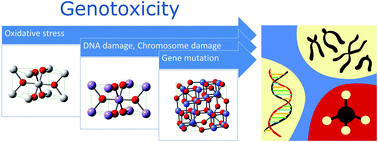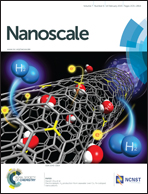Genotoxicity of metal oxide nanomaterials: review of recent data and discussion of possible mechanisms
Abstract
Nanotechnology has rapidly entered into human society, revolutionized many areas, including technology, medicine and cosmetics. This progress is due to the many valuable and unique properties that nanomaterials possess. In turn, these properties might become an issue of concern when considering potentially uncontrolled release to the environment. The rapid development of new nanomaterials thus raises questions about their impact on the environment and human health. This review focuses on the potential of nanomaterials to cause genotoxicity and summarizes recent genotoxicity studies on metal oxide/silica nanomaterials. Though the number of genotoxicity studies on metal oxide/silica nanomaterials is still limited, this endpoint has recently received more attention for nanomaterials, and the number of related publications has increased. An analysis of these peer reviewed publications over nearly two decades shows that the test most employed to evaluate the genotoxicity of these nanomaterials is the comet assay, followed by micronucleus, Ames and chromosome aberration tests. Based on the data studied, we concluded that in the majority of the publications analysed in this review, the metal oxide (or silica) nanoparticles of the same core chemical composition did not show different genotoxicity study calls (i.e. positive or negative) in the same test, although some results are inconsistent and need to be confirmed by additional experiments. Where the results are conflicting, it may be due to the following reasons: (1) variation in size of the nanoparticles; (2) variations in size distribution; (3) various purities of nanomaterials; (4) variation in surface areas for nanomaterials with the same average size; (5) differences in coatings; (6) differences in crystal structures of the same types of nanomaterials; (7) differences in size of aggregates in solution/media; (8) differences in assays; (9) different concentrations of nanomaterials in assay tests. Indeed, due to the observed inconsistencies in the recent literature and the lack of adherence to appropriate, standardized test methods, reliable genotoxicity assessment of nanomaterials is still challenging.

- This article is part of the themed collection: Nanotoxicology

 Please wait while we load your content...
Please wait while we load your content...